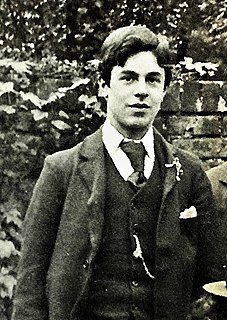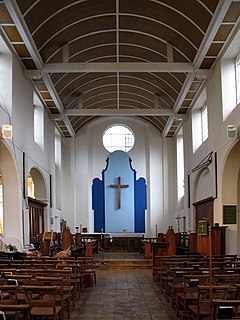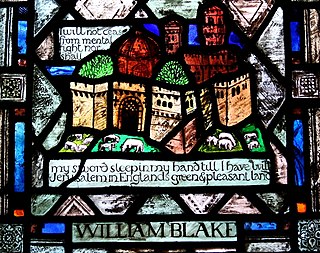Louis Davis was an English watercolourist, book illustrator and stained-glass artist. He was active in the Arts and Crafts Movement, and Nikolaus Pevsner referred to him as the last of the Pre-Raphaelites.

Christopher Whitworth Whall was a British stained-glass artist who worked from the 1880s and on into the 20th century. He is widely recognised as a leader in the Arts and Crafts Movement and a key figure in the modern history of stained glass.

Karl Bergemann Parsons was an English stained glass artist associated with the Arts and Crafts movement.

Mary Lowndes (1857–1929) was a British stained-glass artist who co-founded the stained glass studio and workshop Lowndes and Drury in 1897. She was an influential leader in the Arts and Crafts movement, not only for her stained glass work and successful studio-workshop, but also for opening doors for other women stained glass artists. She was an active participant in the suffragette movement, acting as Chair of the Artists' Suffrage League, and creating poster art to assist the movement.
Edward Woore or Davie Woore (1880–1960) was a British stained glass artist and member of the British Society of Master Glass Painters. He was a student, apprentice and collaborator with Christopher Whall, a stained glass artist and leader in the Arts and Crafts Movement.

Howard Martin Otho Travers was an English church artist and designer.

Margaret Isobel Chilton (1875–1963), born at Clifton, Bristol, was a British stained glass artist and instructor.

Caroline Charlotte Townshend (1878–1944) was a British stained glass artist of the Arts and Crafts Movement. She trained at Slade School of Fine Art and Central School of Arts and Crafts before becoming a pupil of Christopher Whall. She designed and made many stained glass windows, particularly for churches and cathedrals and set up the stained glass firm of Townshend and Howson in 1920 with her student and apprentice, Joan Howson. They used a dual signature for their completed works.

Rachel de Montmorency, née Rachel Marion Tancock, was an English painter and artist working in stained glass. She learned about stained glass when she worked for artist Christopher Whall in the 1910s and 1920s. During World War I she worked as a voluntary nurse.

Mabel Esplin (1874–1921) was a stained glass artist.

Moira Forsyth was an English stained-glass artist. Her father was Gordon Forsyth a Scottish ceramics designer, stained-glass artist, and teacher. They both made impressive works for the St. Joseph's Church in Burslem, Stoke-on-Trent, Staffordshire. She made her name for her stained-glass works, such as those found at Guildford Cathedral, Norwich Cathedral and Eton College Chapel.
Alfred J. Drury (1868–1940) was an English stained glass artist, most notable for his partnership with Mary Lowndes of Lowndes and Drury.
Edward Liddall Armitage or E. Liddall Armitage (1887–1967) was an English stained-glass designer. He studied and worked with Karl Parsons and Henry Holiday before going into partnership with Victor Drury. In the 1940s to the early 1960s, Armitage was the chief stained glass designer for James Powell and Sons. During his career he designed and made stained glass works for churches and cathedrals. He also published a book on making stained glass.
Herbert Hendrie was an English stained glass artist. He is known for his strong simple designs with scintillating jewel-like effects. Among his best-known works are the fifteen windows for Kippen church and the tall stained glass windows for Liverpool Cathedral.

Carl Johannes Edwards was an English stained glass designer. He trained at Whitefriars Glass, taking over as its chief designer following the death of James Hogan. He later established his own studio, first at the Apothecaries Hall, then at Fulham Glass House. Edwards' designs were mainly for church windows, in particular for Liverpool Cathedral.

Joseph Edward (Eddie) Nuttgens, in Germany spelt Nüttgens, was a stained glass designer in England who worked mainly on church windows.
















